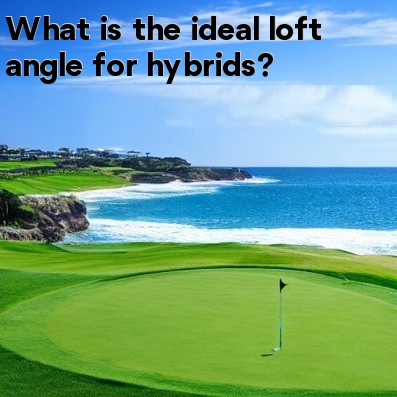
Golfers have a variety of clubs in their bags, each with a specific purpose. One of the most versatile clubs is the hybrid, which combines the characteristics of both irons and woods. Hybrids are particularly useful for hitting shots from challenging lies, such as rough or fairway bunkers. One important factor to consider when choosing a hybrid is the loft angle.
The loft angle refers to the angle between the face of the club and the vertical axis of the shaft. Different loft angles impact the trajectory and distance the ball travels. For hybrids, the ideal loft angle depends on the golfer's skill level and the desired shot shape.
For beginners or golfers with slower swing speeds, a higher loft angle is recommended. A higher loft angle allows for easier launch, helping to get the ball airborne quickly. With more loft, the ball also has more backspin, which helps it stay in the air longer and land softly on the green. Beginners can benefit from using hybrids with loft angles ranging from 22 to 28 degrees.
Intermediate golfers who have developed a consistent swing and moderate swing speed typically opt for hybrids with loft angles between 18 and 22 degrees. These loft angles provide a good balance between distance and forgiveness. The ball launches higher compared to lower lofted hybrids, but still offers ample distance to reach longer holes with accuracy and control.
Advanced golfers with higher swing speeds often prefer hybrids with lower loft angles, typically ranging from 14 to 18 degrees. These lower loft angles produce a lower ball flight and greater distance. Skilled golfers can generate sufficient backspin and launch the ball high enough even with these lower lofts. The lower loft angle also allows advanced golfers to shape shots and control trajectory effectively.
When selecting the ideal loft angle for hybrids, it is essential to assess personal preferences, course conditions, and the golfer's strategy. For example, golfers who play on courses with narrow fairways may opt for hybrids with higher loft angles to increase accuracy and control, while those playing on links-style courses with wind challenges may choose lower lofted hybrids to combat strong winds.
Golf club manufacturers now offer adjustable hybrid options, allowing golfers to fine-tune their loft angles to suit their specific needs. This versatility enables golfers to experiment with different loft angles over time and adjust as their skills and playing conditions evolve.
In conclusion, the ideal loft angle for hybrids in golf is not a one-size-fits-all answer. It varies depending on the golfer's skill level, swing speed, and course conditions. Beginners typically benefit from higher loft angles for easier launches, while advanced golfers often prefer lower loft angles for greater distance and shot shaping capabilities. Intermediate golfers typically find a balance in the middle range of loft angles. Ultimately, selecting the right loft angle for hybrids is a personal decision that requires experimentation and consideration of individual playing style and goals.





